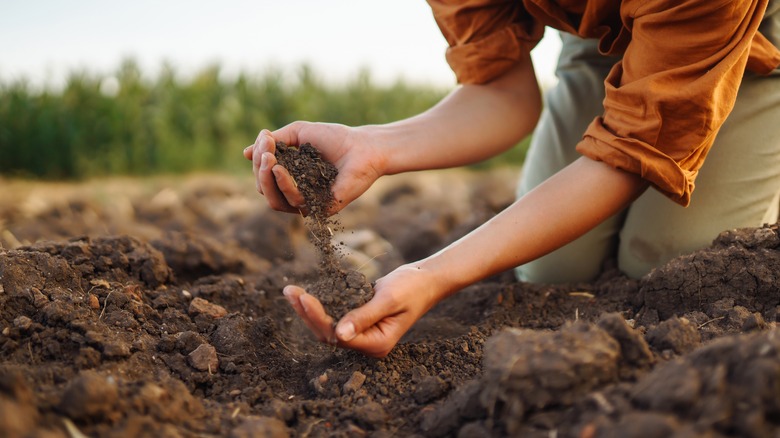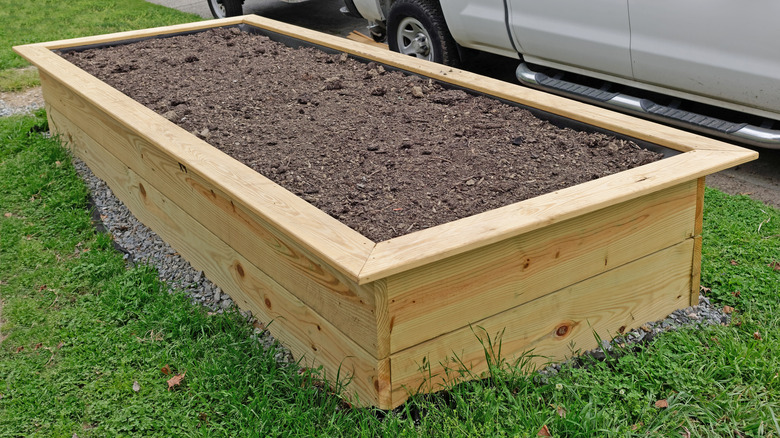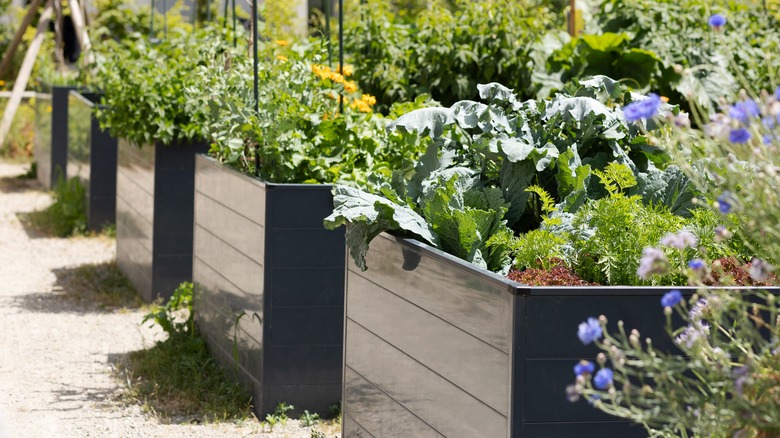Think Twice About Using Your Own Soil For Raised Garden Beds
If you're installing a new raised bed, simply filling it with some extra soil from around your yard may seem like a cheap and easy way to go. After all, dirt is dirt, right? As logical as this may appear, using only your native soil is actually a poor choice for raised beds and will likely set your garden up for failure, as it results in both soil compaction and poor drainage. These issues will dramatically reduce your garden's productivity.
There are a variety of raised garden bed designs available, and the concept in general has seen a boom in popularity as of late, thanks in no small part to raised beds' accessibility and potential productivity when compared to traditional in-ground gardens. Not only can raised beds make it easier for wheelchair users and people with mobility issues to enjoy gardening, as these beds require little to no bending over, but they also make it possible to garden on patios, porches, and even in areas with contaminated soil. When they are set up correctly, raised beds can have better drainage and less soil compaction compared to in-ground beds, as well.
Why you shouldn't use only your own soil to fill raised beds
Particle size is one of the most important factors impacting drainage and compaction in soil. The smaller the soil particles, the less space there is between them, resulting in poor drainage and increased soil compaction. This also prevents oxygen from getting into the soil. All these things can spell disaster for plants and can lead to weak roots or even root rot as the soil becomes too dense and waterlogged for roots to grow and thrive. The soil in your backyard likely has exceedingly small particles, especially if you live in an area where clay soil is the norm.
Despite the problems of creating a raised bed with only extra dirt from your yard, some amount of native soil does have a place in most raised beds. Because it can be challenging to decide how much, if any, native soil to use, and which popular raised bed ingredients to mix it with, you should ideally have your soil tested. While there are simple DIY tests you can make to check many aspects of soil health, you may want to consider having your soil tested professionally in this instance as it can provide more detailed feedback.
What to use to fill your raised beds
To prevent issues with compaction and drainage, many recipes for raised bed growing media are a mix of three important soil ingredients: amendments, good quality topsoil, and around 20 percent compost. Some recipes, like the iconic Mel's Mix go even further, advising a mix of vermiculite, peat moss or coco coir, and compost. The advantage of including vermiculite is its high porosity, while the peat moss or coco coir helps give the soil a loose and crumbly texture.
As long as there are no concerns about toxins or other contaminants in your soil, Oregon State University Extension Service recommends filling your beds with a soil blend that includes at least 30 percent native soil. The native soil available for free in your yard likely contains a wide variety of minerals that benefit, or are even essential to, plant health. Rutgers University's New Jersey Agricultural Experiment Station notes that most food crops have evolved to grow best in mineral-rich soil and that using significant amounts of your native soil can be the best and most sustainable option for productive and healthy raised beds.


